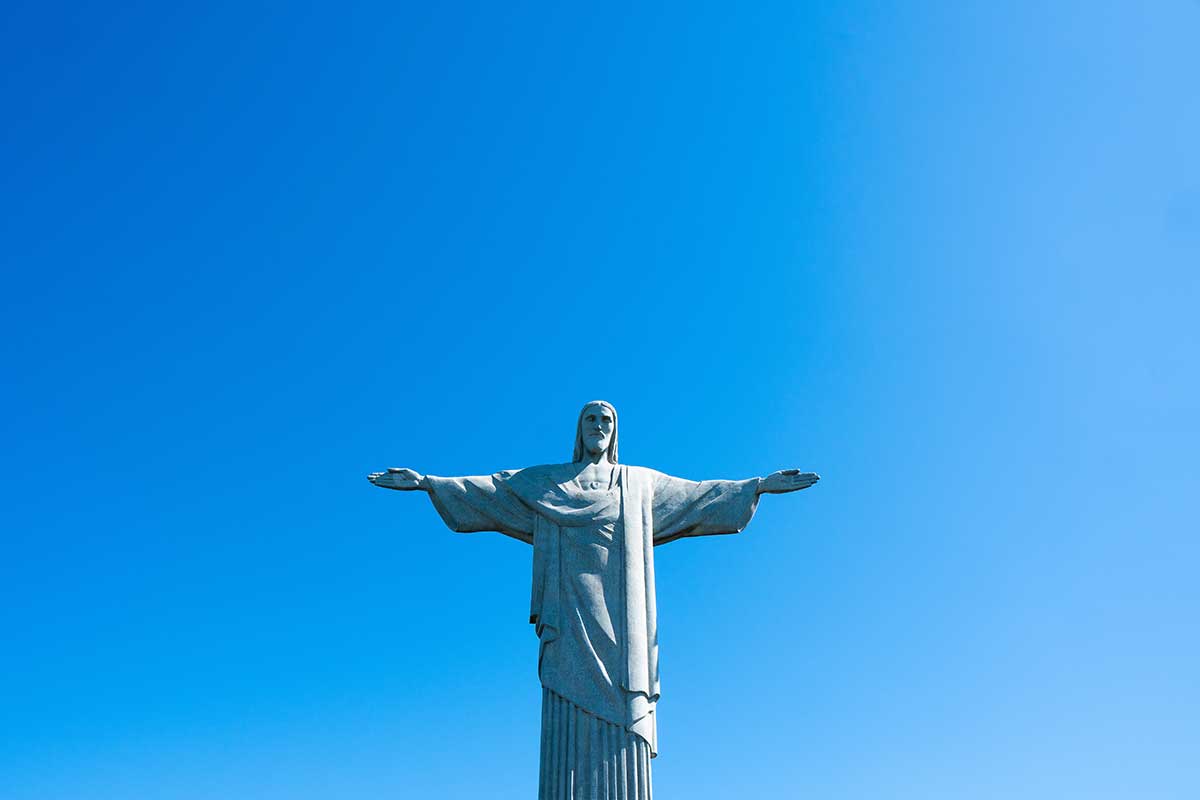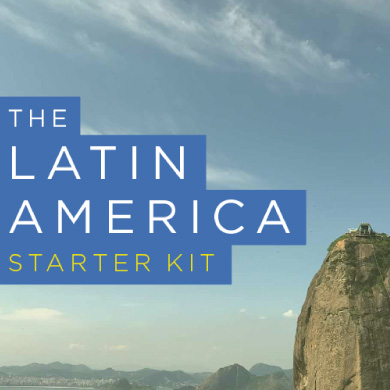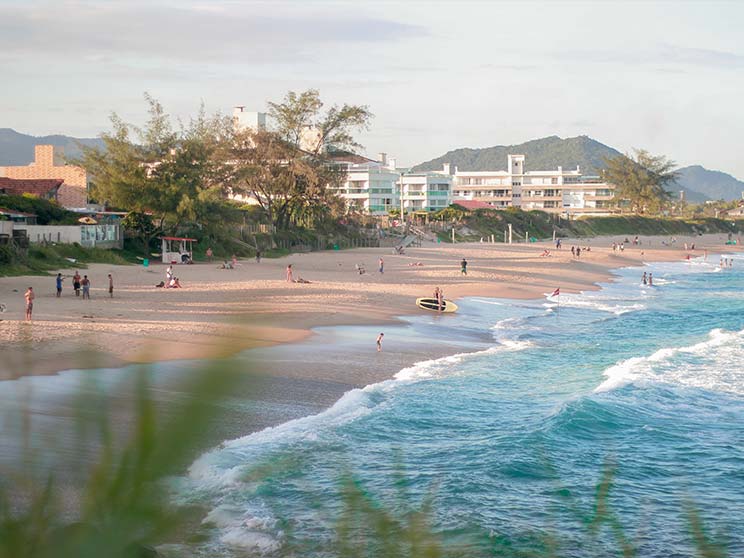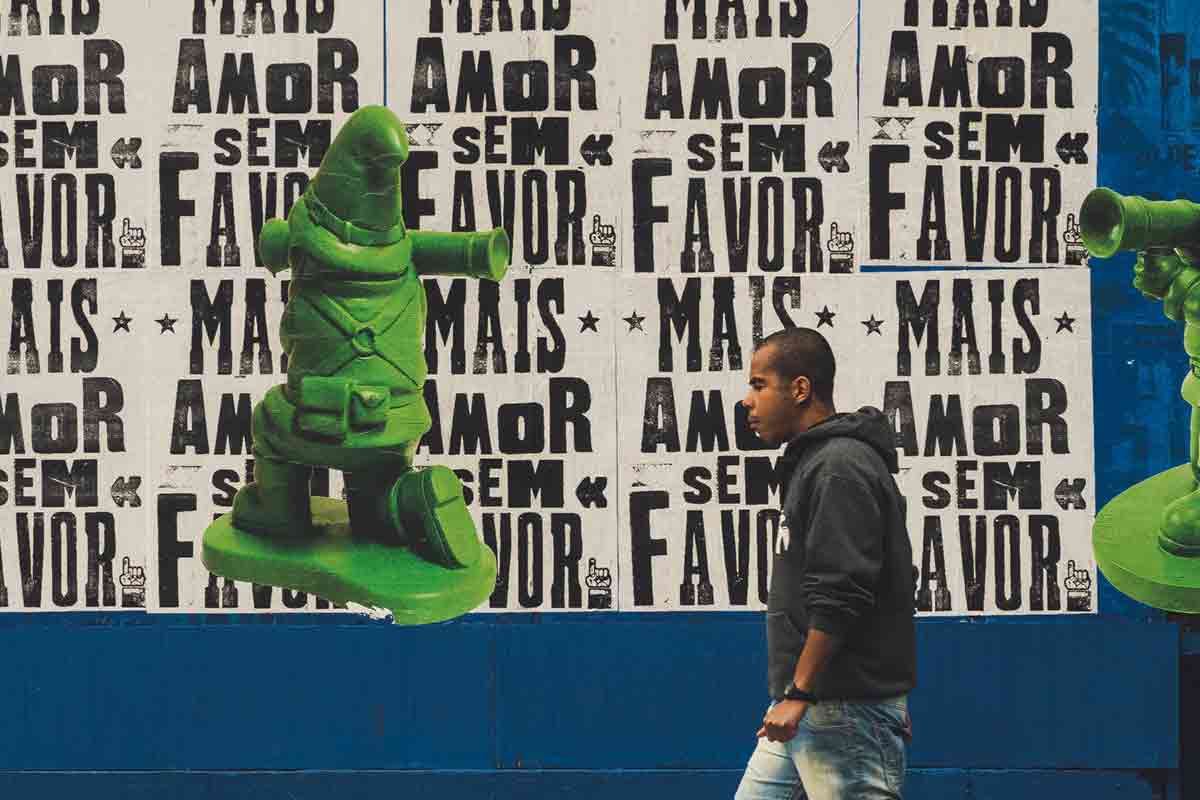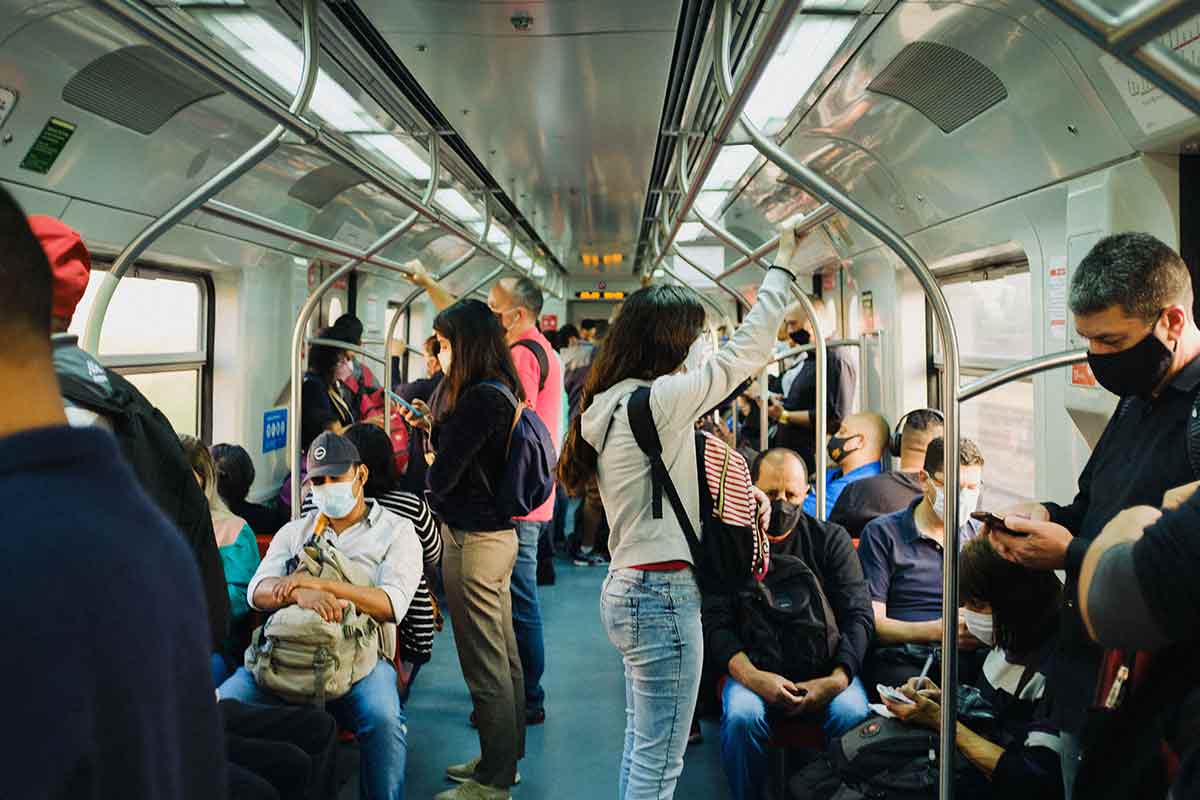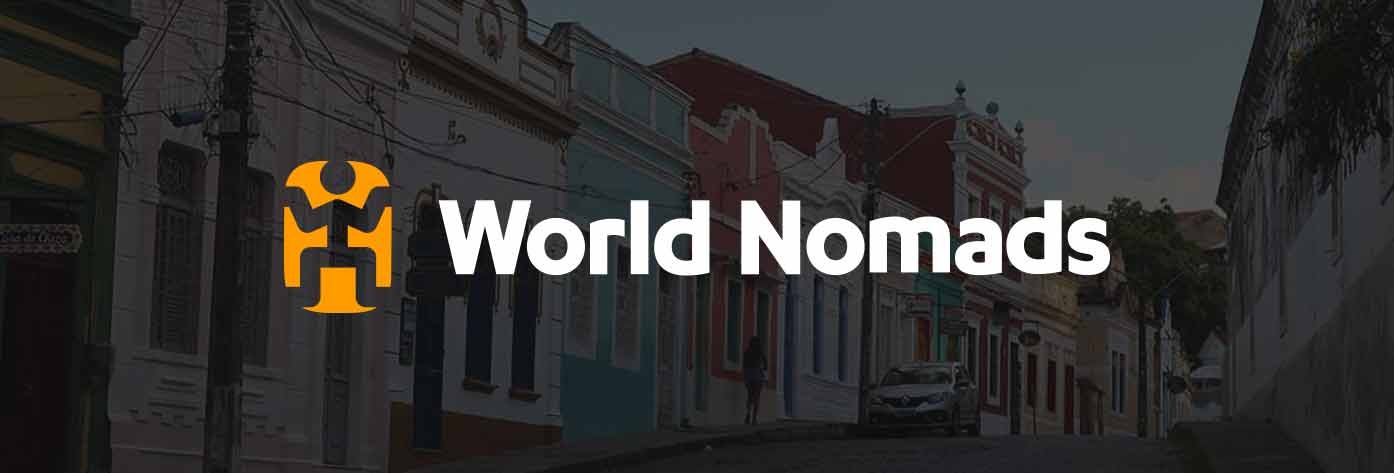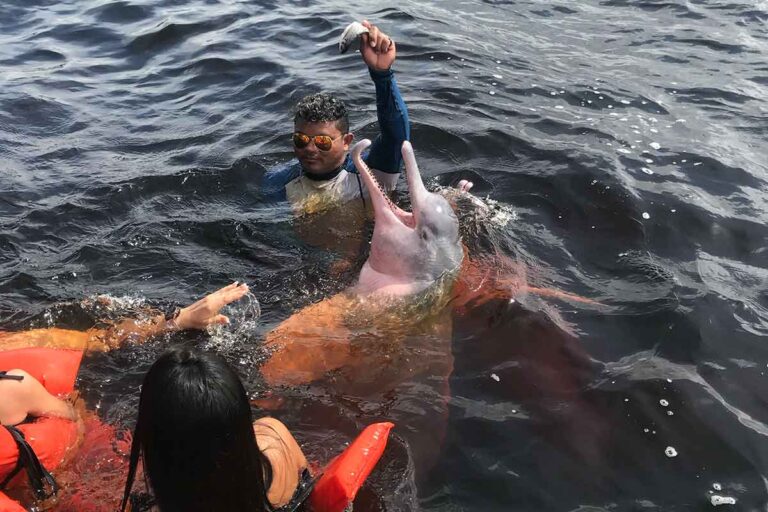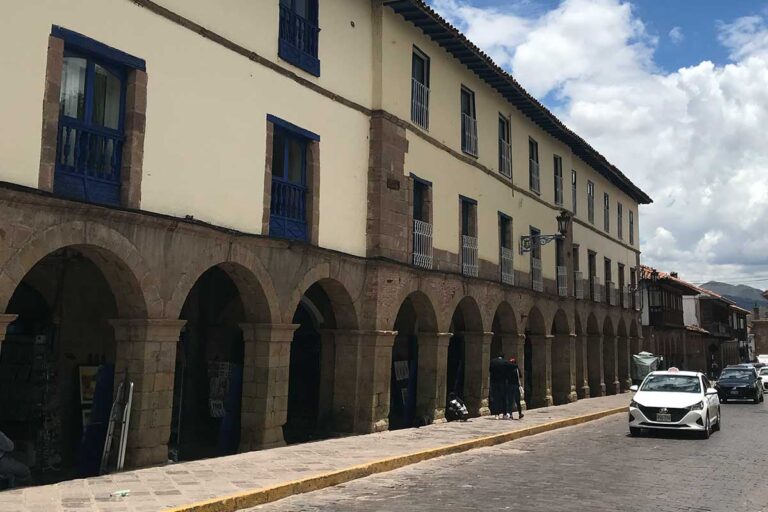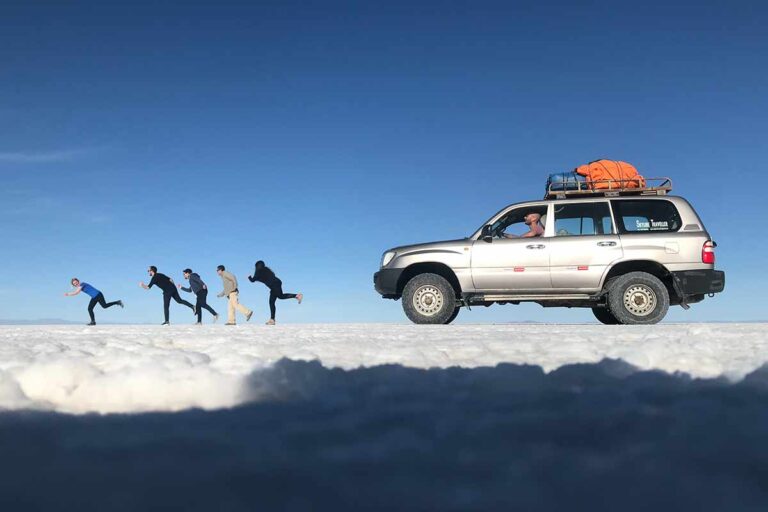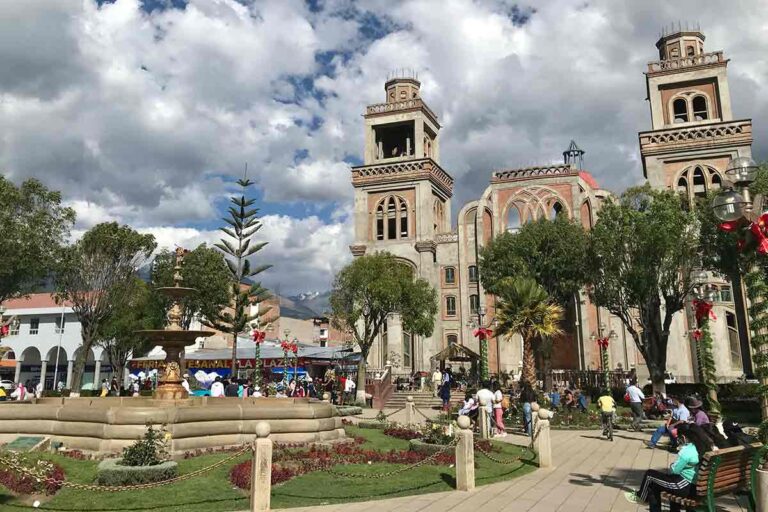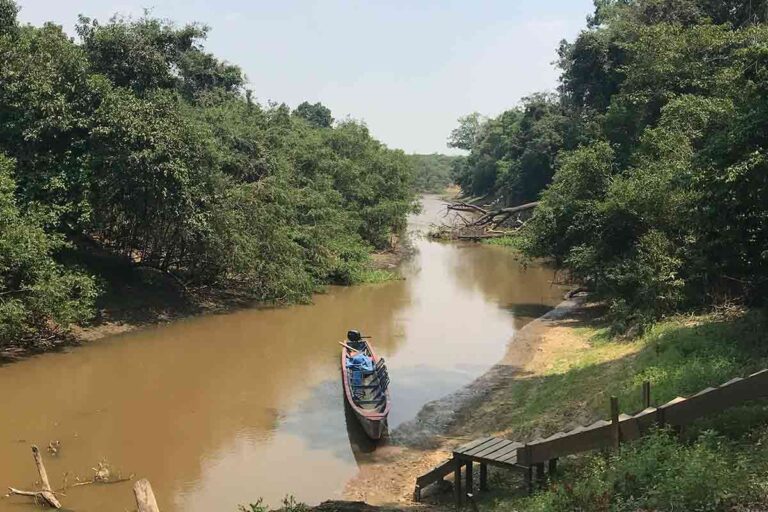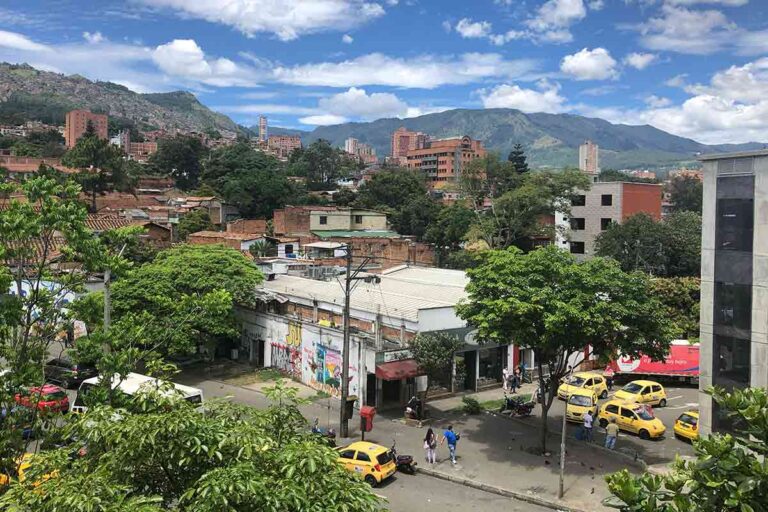Backpacking Brazil Itinerary
Are you thinking of backpacking Brazil?
Brazil is one of the most interesting countries South America has to offer. It’s filled with history, religion, culture, and, of course, sports!
The country is surrounded by Amazon rainforests and tropical oceans, so it has plenty of outdoor adventure opportunities.
It’s an exciting destination for tourists, which is why it’s so popular, and it has a lot to offer.
Backpacking Brazil
In this guide, we are going to look at some of the popular places to visit in Brazil for travelers and backpackers looking for inspiration.
Is Brazil Worth Visiting?
Brazil is the largest nation in Latin America and also one of the most popular to explore.
With some of the best beaches in the world, an incredible, untouched jungle and a hotpot of cultures to explore, everyone must visit Brazil at least once in their lifetime!
As well as hosting the largest carnival in the world, Brazil is also known for its extremely friendly and inviting people, which results in a country that few want to leave after visiting.
BLATAM backpacking data:
- 💰 Currency: Real
- 🇧🇷 Language: Portuguese
- 🌎 Population Size: 212 Million
- 📍 Best Secret: Jericoacoara
- 🍴 Eat: Pão de Queijo, Feijoada
- 🥛 Drink: Caipirinha
- 💸 Average Daily Budget: $20-30
Is Brazil Safe?
Many tourists wonder whether Brazil is a safe destination or not.
Brazil is known for its crime rate. However, this has much to do with gang-related activity, which means tourists aren’t the targets of that violence.
Our basic tips for safety in Brazil include:
- Walk with purpose when you’re out and about.
- Dress to fit in.
- Leave your valuables at home.
- Never take free food or drinks from strangers.
However, tourists are at risk of pick-pocketing or muggings, which is why though this is a relatively safe place to visit, you must take precautions. But more on that later!
Safety About Facts Brazil
- One way to evaluate safety is by looking at the 2020 Global Peace Index. This measures the state of peace of each country in comparison with the rest of the world, by evaluating both tangible and qualitative indicators.
- Brazil ranked as 126th out of the 163 nations measured, which is similar to that of Kenya and Saudi Arabia. For comparison, The United States ranked as 121st.
- Compared with the rest of South America, Brazil is known as one of the more unsafer countries to visit. Be sure to bring a secure Padlock to keep your things safe as you go exploring during the days.
- Big cities like Rio de Janeiro and São Paulo tend to be safe in the touristy areas, but can then range to very unsafe in suburbs that are not too far away. A classic example are the favelas in the hills of Rio, which are renowned for gang violence and extreme corruption.
- If heading to the favelas, only go with an organized tour who knows the area well and any current happenings.
- With the rest of the major destinations, exercise the same caution as you would in any other Latin American country. This includes leaving flashy and expensive accessories at home, as these will only entice opportunistic thieves. The other main tip is to avoid going out late alone at night.
Brazil Backpacking Itinerary
There is a lot to do in Brazil, so it’s difficult to narrow down all the available options.
To help you do that, today we bring you a list of some of the places you simply can’t miss when you visit the country!
Rio de Janeiro
Rio de Janeiro is one of the most exciting destinations on earth and it’s one of the most visited cities in South America, for good reason.
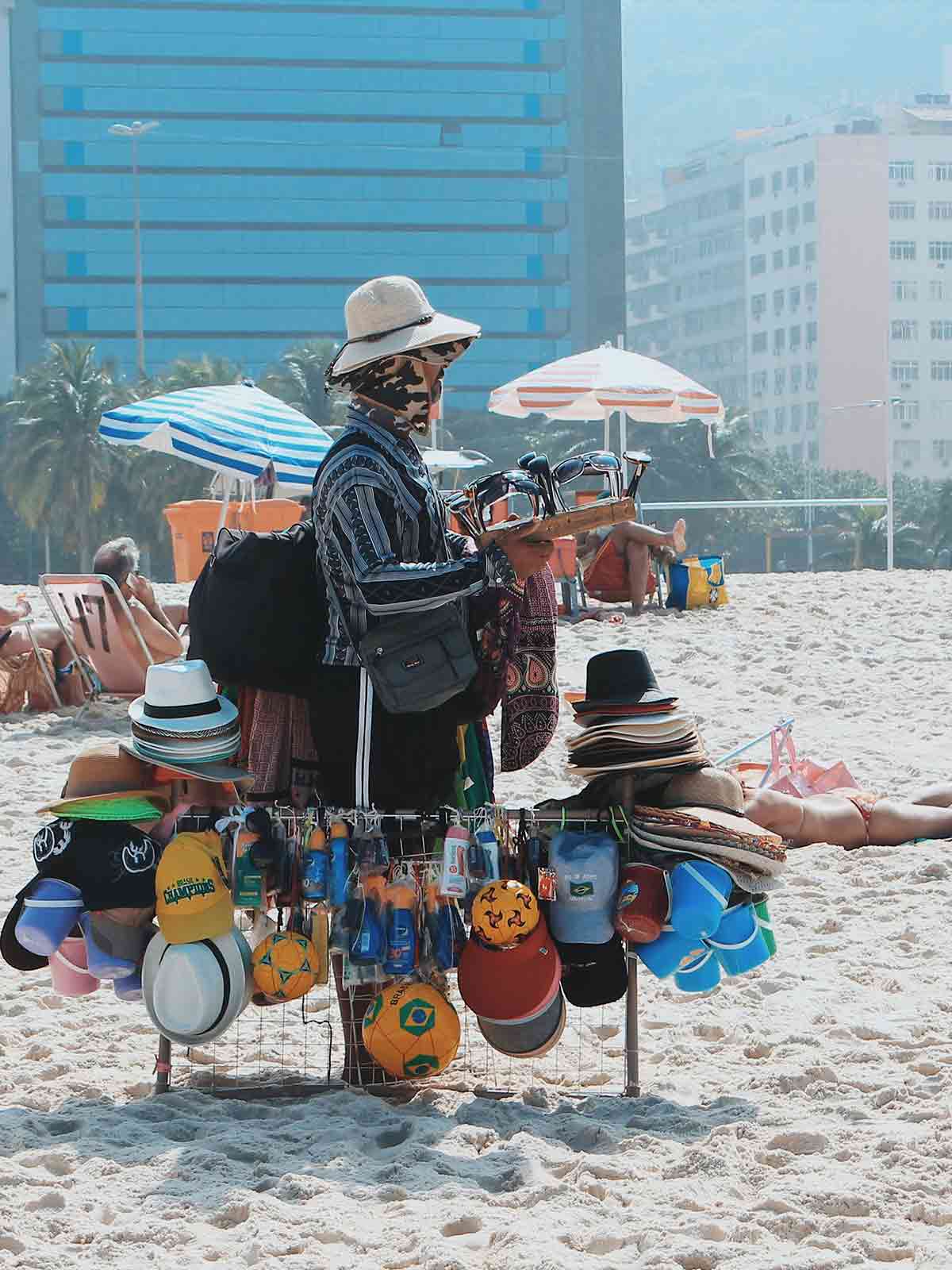
It’s surrounded by breathtaking natural attractions such as the Corcovado mountains and it also provides access to beaches such as Ipanema and Copacabana.
You will also get to visit the Christ the Redeemer statue, which is iconic, along with many landmarks and interesting spots.
If you go during the Carnival, you’ll enjoy some of the most epic parties, parades, and celebrations.
Pantanal
The Pantanal is the largest tropical wetland area in the world and it’s very diverse, so it’s worth a visit.
The scenery and the wildlife will make for a memorable visit, which is why it’s such a popular destination for tourists who visit Brazil.
You will be able to explore the incredible landscapes and you will spot many capybaras and caimans. You may even get a glimpse of the elusive South American jaguar, an incredible creature.
This incredible, 3-Day Tour in the Pantanal is one of the best trips you can take in Brazil, where you can see everything from Jaguars and Howler Monkeys to Toucans and Otters.
Florianopolis
Florianopolis is located to the south and it has the most scenic setting, which is why tourists love to visit.
It’s an important economic, cultural and political hub and it’s considered to be one of the best places to live in Brazil. The main attraction is the beaches, but you’ll also find dunes, waterfalls, lovely mountains, and much more.
Foz do Iguacu
Foz do Iguacu, or Iguazu Falls, is one of the most breathtaking natural wonders and it’s often compared to Victoria Falls and Niagara Falls.
It’s a huge waterfall that’s surrounded by rainforest and it has infinite cascades, which is why it’s one of the largest waterfall systems on earth.
There are plenty of things you can do when you visit. For example, you can hike the rainforest or take a boat ride under the falls. Either way, it will be magical! While here, we recommend heading on this tour where you’ll be able to explore the Brazilian side of the waterfalls.
Sao Paulo
Sao Paulo is one of the largest city in the country and the world, so it’s definitely worth a visit. It’s known for its gastronomy, cultural scene, and many amazing skyscrapers.
Definitely try to visit Paulista Avenue, which divides the city in two and it’s bursting with art galleries, restaurants, theaters, shopping malls, businesses, and much more. There are plenty of opportunities for excitement here!
The best way to explore São Paulo is with this guided tour, who will show you all of the best sights including Ibirapuera Park as well as the Japanese district of Liberdade.
Bonito
Last but not least, we have Bonito, a small city in the Pantanal region that’s definitely worth a visit.
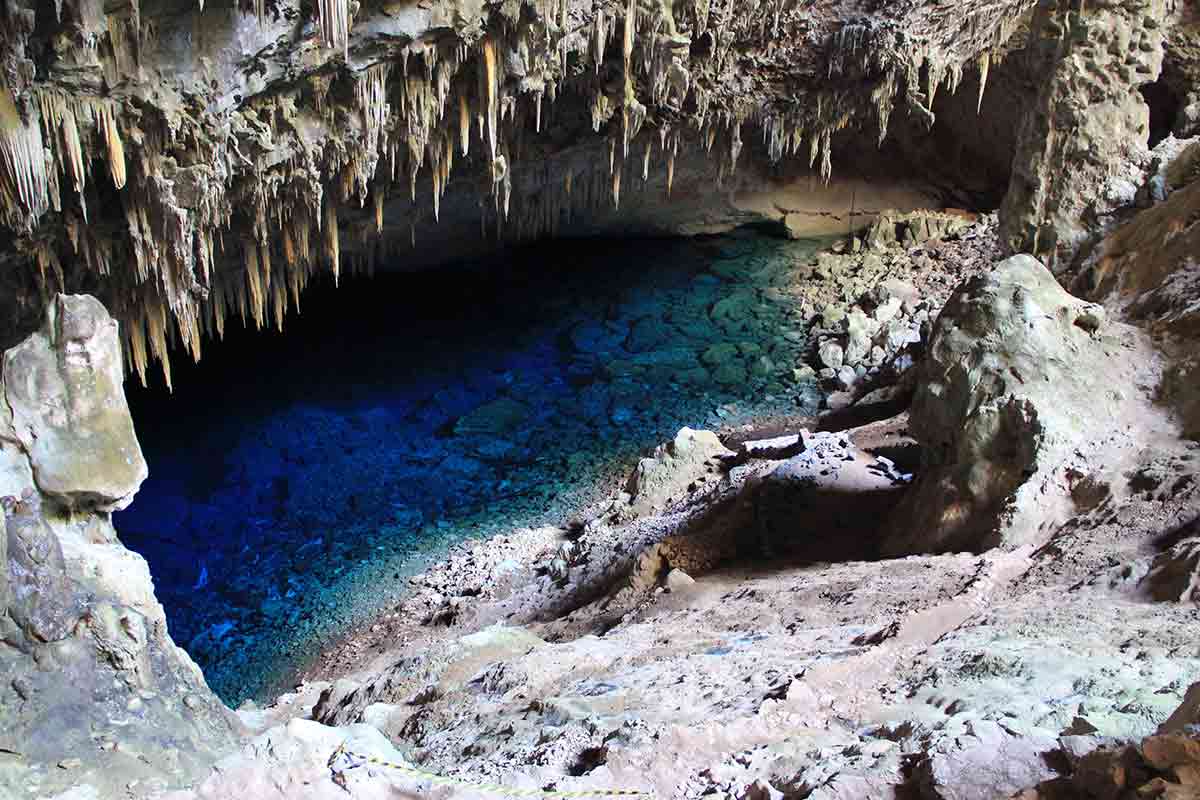
If you practice ecotourism, this is the place to go because there are a wide variety of natural wonders.
You’ll find waterfalls, sinkholes, caves, rivers, and more, where you’ll be able to engage in many different outdoor activities.
You’ll also be able to learn more about the fauna and flora of the region by visiting the Serra da Bodoquena National Park.
Estância Mimosa is another beautiful region worth visiting, which is full of picturesque waterfalls and caves. We recommend going with this day tour.
Brazil Itinerary (2 Weeks)
Below we’ll cover our very best Brazil itinerary. As well as keeping an eye on time, it’s also been designed to keep things fresh and exciting too for you.
Before we get started, it’s of course important to note that this country is pretty huge. So here we’ve only covered the southern highlights of Brazil.
Rio de Janeiro (Days 1-5)
To kick off our Brazilian adventure, we’ll first be arriving in the pulsating hub of Rio. Whilst its international airport is slightly less connected as São Paulo’s, we definitely recommend starting in this city first.
Rio really is a melting hotpot of culture, rhythm and festivities. The areas of Copacabana and Ipanema are the best for their expansive beaches, as well as for partying and their abundance of accommodation options. Lapa is also a great spot with arguably better nightlife than the other two.
The best things to do in Rio could easily be made into an article of its own, but we’ll cover the very best here. Christ the Redeemer is an absolute must, with this one of the seven wonders of the world being perched over a mountain, allowing a perfect panoramic view of Rio and its coastline.
Sugarloaf mountain is another unmissable, where you can ride the gondola to the top (or even rope climb if you’re feeling daring!).
Be sure to also visit the Maracaña Stadium for a local football match, where you’ll be swept away by the passion of the fans and o jogo bonito. This highly rated day tour is the best way to explore all of Rio’s top highlights.
Ilha Grande (Days 6-8)
After our unforgettable time in Rio (well, perhaps forgotten if you became nicely acquainted with a caipirinha, that is), we’ll now head to the stunning island of Ilha Grande.
To get here we’ll first need to take a bus to Conceição de Jacareí, followed by a boat ride to the island. In total it’ll take around 3/4 hours.
Ilha Grande is best known for its world-class beaches, and whilst Rio’s are for the party crowd, these are much better for a well-needed relax time. The beaches of Aventureiro and Lopes Mendes are the best and are strong contenders for the best overall beaches in Southern Brazil.
Other cool things to do here include snorkeling with exotic and colorful fishes in Lagoa Azul, getting off the beaten path by hiking through Trilha do Bico Do Papagaio (a mouthful, we know) as well as summiting its peak for the best views over Ilha Grande.
This day tour is one of the best ways to explore the region, including stunning beaches such as Praia de Japar
São Paulo (Days 9-12)
From Ilha Grande, we’ll now head to the giant City of São Paulo. The largest city in South America, it can be quite intimidating for a first-timer, however, we’ll outline the best way for you to do this city below.
To get here we’ll first take the ferry to Angra dos Reis on the mainland, and then the bus to São Paulo (around 10 hours in total).
As it’s so big, it can be hard deciding where is best to stay. We recommend staying in either the upscale district of Vila Madalena or in Jardim Paulista which is close the mammoth-sized Ibirapuera Park.
Some of the best things to do here include exploring that park (along with its lake and monuments), which is the biggest man-made park in all of Latin America.
Be sure to head to the La Libertade district too, which is full of Japanese influence and cuisine, with this area the biggest settlement of those from Japan outside of the country.
Foz do Iguaçu (Days 13-15)
Last but not least we visit the ultimate waterfall destination of the country. To get to Foz we’ll need to take the long bus of 16 hours, or you can also save time by flying if you’ve got the funds.
Foz do Iguaçu is right next to the towering Iguaçu Falls (or Iguazú in Spanish), with Brazil home to one side that looks over to the Argentinian part.
At 195m, they’re not the tallest falls, however, they’re by far the most surreal in Latin America (and probably the world too) for the sheer amount of cascades thundering from all sides.
However, it’s not the only thing to do in town. The Parque de Aves is located close-by to the falls, and is home to over 140 species of rare and exotic birds from all over the Atlantic Rainforest.
Another awesome thing to do is to tick off your first-ever tri-border landmark! That’s because the Marco das Tres Fronteiras is the official meeting point of Brazil, Argentina and Paraguay, which is along the Paraná river.
From here you can either take the bus back to São Paulo for your departing flight, or alternatively cross the borders into either Argentina or Paraguay to continue your South American adventure.
Those who want the all-time best views will want to head on this fly-over helicopter tour, with words really not able to do this experience justice
And there we have our 2 week Brazil itinerary. Now let’s move on to our most important tips, so you can have the best experience possible here.
Brazil: Travel Safety Tips
As mentioned before, Brazil is generally a safe place to visit but it’s important that tourists take certain precautions because they’re often victims of petty crimes such as pickpocketing.
⬇️ Below you can find a list of our top recommendations for Brazil:
- Don’t carry more cash or more cards than you need and leave the rest at the hotel.
- If you’re going to the beach, don’t take anything you don’t need.
- Look out for the top rated hostels in Brazil for the most comfy rooms etc.
- We recommend looking at local airlines, as flights can sometimes be really cheap within Brazil.
- Brazil is one of the most diverse countries in Latin America when it comes to the local grub. Be sure to try Pao de Queijo, which is a cheesy bread as well as Moqueca, which is Brazilian fish stew that is mixed up with coconut milk, peppers and tomatoes.
- There’s no better country than Brazil when it comes to party and atmosphere. Rio and Salvador are the very best, whilst pretty much all of the other major cities have enough for you to explore and never feel like you’re bored!
- If in Salvador, head to Zen as well as the hidden bar of Casa Preta, and whilst in Rio be sure to check out the nightlife capital of Lapa, which is full of incredible nightclubs and samba bars!
- Don’t flaunt your mobile devices when you’re out and about.
- Christ the Redeemer (Rio), Carnival (Salvador), The Amazon, Ilha Grande, Mercado Municipal (São Paulo). See this list of top rated tours in Brazil
- Avoid rough areas and don’t use outdoor ATMs, always go for the ones inside buildings.
- Don’t leave your valuables just lying around the hotel room. Lock them up before you leave.
- Walk with purpose when you’re out and about. Don’t look unsure because pickpockets and muggers will take advantage of that.
- Avoid walking around alone at night and avoid empty areas such as beaches and parks.
- It goes without saying – Brazil is huge. As the 5th largest country in the World, distances are huge, with journeys sometimes taking dozens of hours to reach by bus. To save time we reco
Follow these tips and you’ll be able to avoid common risks tourists are subject to. Just because you’re on vacation doesn’t mean you shouldn’t be careful, so remember to be cautious and be aware of your surroundings.
Traveling around Brazil
If you want to explore Brazil by bus, there are a few tips that will make things easier for you.
For one, purchase your bus tickets online and always look up the bus schedules in advance.
Always get there 30 minutes earlier and bring a pen with you to fill out your ID number, address, and name on the bus ticket.
If you’re taking an overnight bus, bring a jacket or a blanket, and splurge on a Leito or Executivo ticket so you can be more comfortable during the long ride.
Some of our favourite hostels in Brazil include:
Hostel Maresias do Leme (Rio de Janiero), Tucano House Summer Hostel (Florianópolis), Porto das Palmeiras Hostel (Salvador).
Best time to visit Brazil
We’ve spoken a lot about the best time to visit South America on this blog (George is absolutely obsessed with checking the weather when we travel).
Spanning over 4000km in length, Brazil is home to a range of climates as well as different biomes. We’ll split it up into the three main areas and what you can expect from a visit to each.
Manaus and much of the Amazon Jungle are pretty hot and humid all year round. Average temperatures range around 77°F, although between August and November this rises up to an average of 82°F.
The hottest months to visit the Amazon Jungle are September and October with highs of up to 91°F. The coolest month in contrast is January, with lows of 74°F.
Rainfall in Manaus can vary quite considerably. December until May is the official wet season here, with between 7-10 inches falling throughout each month (March is the wettest month with 10 inches of rainfall). Visiting between July and September promises the driest weather, with only 2 inches falling throughout these months.
Now let’s look at Salvador, which is a good destination to cover that’s similar to many other areas in the north of Brazil. Temperatures are pretty stable throughout the year, so there’s no real warm or cool season to be discussed.
Most annual temperatures range from 78-81°F, with highs of up to 88°F. December until April is the hottest period to visit Salvador, and August in contrast is the coolest month to visit.
Rainfall on the other hand is pretty seasonal. October until March is the driest time to visit with only 1-3 inches falling throughout each month. May, on the other hand, is the wettest month of the year to head to Salvador, with around 6 inches of downpour.
Then we have the south of Brazil. Rio de Janeiro is the most popular destination to visit here, so we’ll cover this gem. Rio has more clear warm and cool seasons compared to the rest of Brazil.
May until October is cooler, with average temperatures of 70-73°F with highs of up to 79°F and lows of 64°F (July being the coolest month to visit Rio).
November until April on the other hand is much warmer. Average temperatures range from 77-81°F, with highs of up to 86°F (January and February are the hottest months to visit Rio).
Rainfall is at its lowest in Rio in July and August with around 50mm falling throughout each, and at its highest in December with up to 170mm of downpour. The rest of the months vary somewhere between 80-130mm.
What to pack for Brazil
Despite Brazil’s massive size, it’s still pretty warm here regardless of where in the country you visit, and also when in the year you go.
With the climate ranging from warm to hot, it’s always best to pack lots of light clothes for the sun and beach weather.
You’ll need to bring some sturdy hiking boots and a solid raincoat if heading into the Amazon and Pantanal, as depending on the month, these can get very wet. Also make sure to pack some anti-mosquito repellent as well, as mosquitoes can be a nuisance in Brazil.
As well as the above, you’ll also want to pack the essentials which include toiletries, a document holder, towels, a water bottle as well as a daypack for any excursions you’ll be taking part in.
Got travel insurance for Brazil?
Backpacking Brazil: Final Words
This Brazil itinerary is a guide you can trust, so make sure you revisit it before and during your travels so you don’t miss anything important and make sure everything’s in order.
Stay safe and have fun exploring this amazing country with tons of adventures to offer!
We have listed more places to visit in our backpacking South America guide so why not check that out while you’re here?
👉🏽 P.S. If you’ve found this guide helpful, buy us a coffee here to say thanks! Or, support us by downloading our South America Travel Bible to get our best content.
“Dear traveler! Some links in this post contain affiliate links. Meaning, if you click through and make a purchase, book a hostel or sign up for a tour, we may earn a small commission at no additional cost to you. Your support means a lot and helps us to carry on traveling and maintaining the quality of this site for you.”

